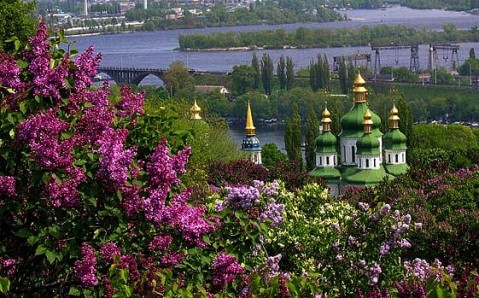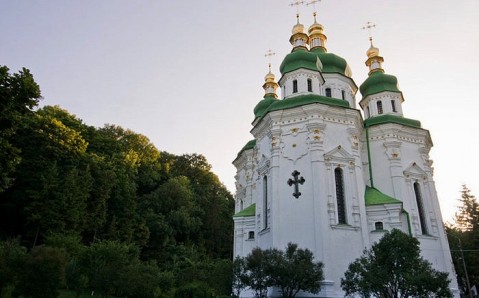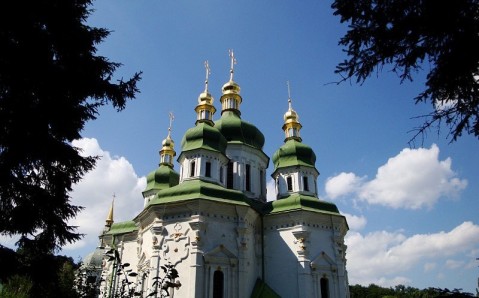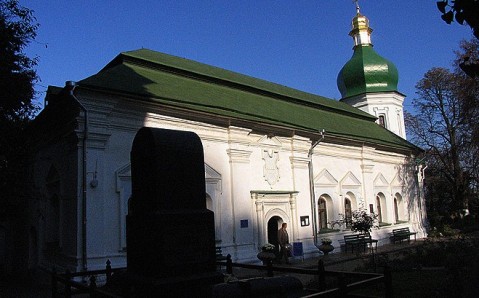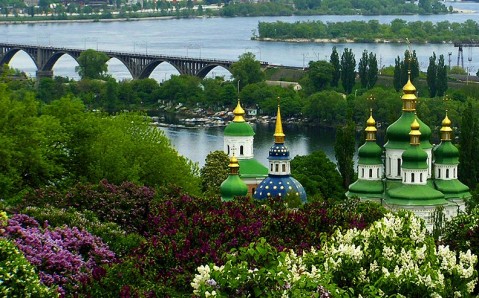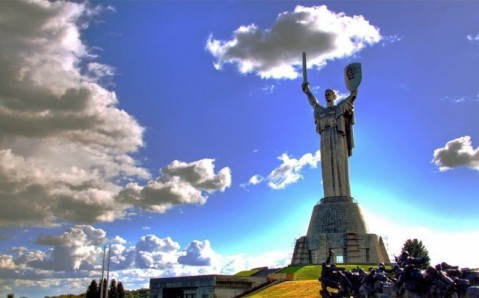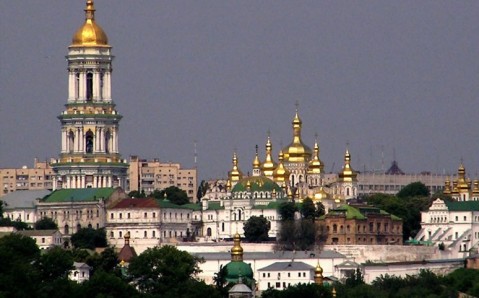Vydubitsky Monastery
The Vydubitsky Monastery is reckoned among the oldest cloisters in Kyiv, and its buildings have the status of significant historical and architectural monuments of Ukraine. The monastic complex stands on the picturesque slopes of the Dnieper River in the Vydubichi Hole, which is situated on the territory of the capital's Central Botanical Garden.
The origin of the area's and monastery's unusual name is connected with an ancient legend. According to it, the Prince Vladimir the Great decided to baptize Kyivan Rus and ordered to collect all idols of the pagan God Perun and to throw them in the Dnieper. The place, where the wooden statues 'vydybaly', that is swam ashore, was called Vydubichi. Another version is that the area got its name because of the crossing, which was located here in the ancient times. The townspeople used to cross Dnieper River on the so called 'dubi', the boats made of the solid oak trunks.
The monastery was founded here by the Old Russian Prince Vsevolod, the son of the Yaroslav the Wise, in the late 11th century. Soon, the cloister turned into significant center of Rus's spiritual and secular life: it was here that Kyivan Princes held negotiations and gathered host, and many learned monks lived and worked. Over the next two centuries the monastery suffered several conflagrations, and in the middle of the 13th century, it was severely damaged during the Tatar Mongol invasion and remained desolated for a long time. Only at the threshold of the 12th-13th centuries, with financial support of patrons, the Vydubitsky cloister started to rebuild and expand rapidly and managed to return its former grandeur.
The monastery's unique architectural ensemble was developed over the years of its existence and harmonically fits in the picturesque landscape of the Dnieper's right bank. Complex's oldest building is the St. Michael's Church, built back in 1070 as the main temple of the Vydubitsky Monastery. In the late 12th century, river waters started to undermine the hill, where the church stood, and in order to save the temple the owners strengthened it with the breast wall. However, three centuries later, half of the St. Michael's Church's building and the strengthening fell into the Dnieper River. In the year 1769, the temple was fully reconstructed, but the Old Russian style was replaced with the Ukrainian baroque. The fragments of the 11th century's fresco painting and of the 18th century's wall painting survived until now and are of great interest.
The compositional center and the main building of the modern monastery is the St. George's Cathedral, built in 1701. It is considered to be one of the best samples of the Cossack Baroque. Almost simultaneously with it, the Church of the Saviour famous for its unique carved iconostasis and the refectory appeared on the cloister's territory. Another inherent element of the Vydubitsky Monastery's architectural ensemble is the bell tower that combines two styles: baroque and classicism. Initially it had three tiers: the first one was the driveway to the cloister, on the second one the Church of the Prophet Daniel was located, and the bells hang on the third tier. In the 19th century, the belfry was reconstructed and as a result it obtained another tier with cupola, originally designed as the firmament.
In the late 20th century, the fundamental restoration of the monastic complex was carried out. The necropolis, where many prominent scientists, artists and public figures of Ukraine are buried, survived at the cloister. The monastery's territory offers breathtaking panoramas of the left bank Kyiv.

 Kyiv
Kyiv
